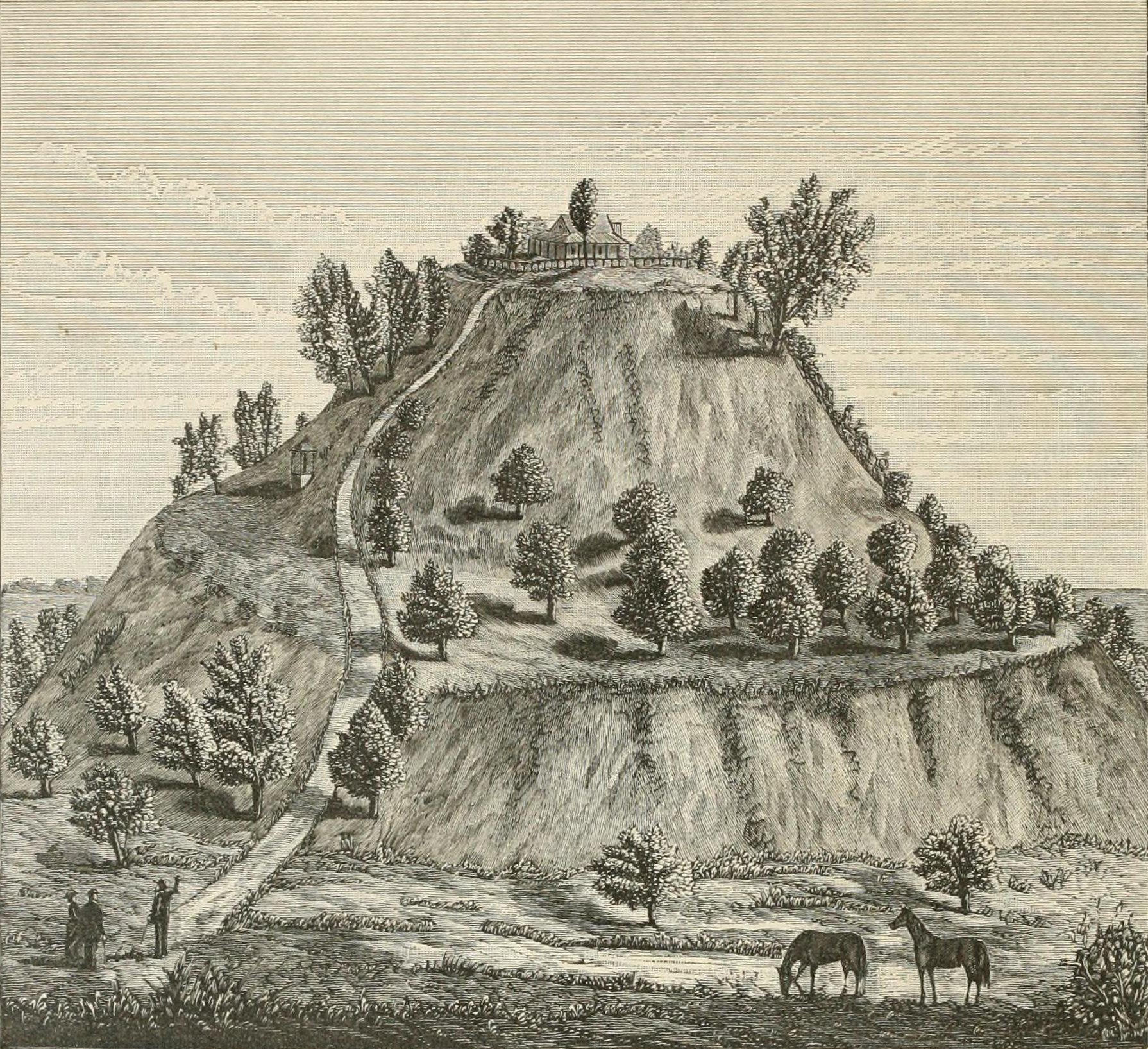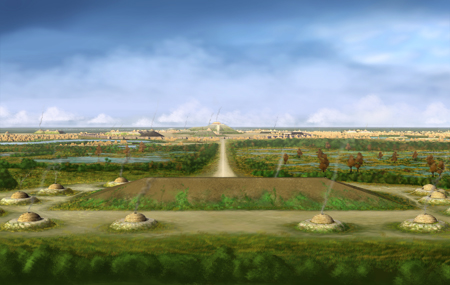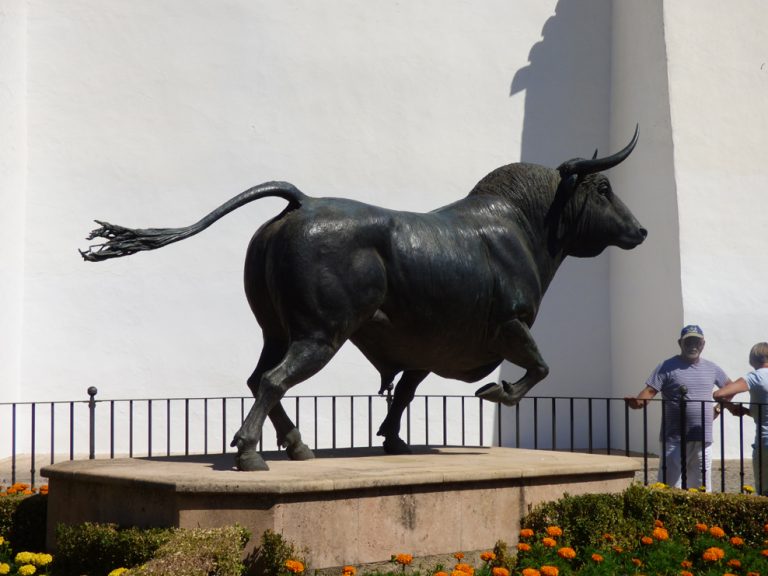Cahokia was the largest city in North America before the arrival of Europeans in the New World. Also called the “City of the Sun,” this site was home to approximately 20,000 people by 1050 A.D., being one of the largest and most influential settlements on the continent, almost as grandiose as the pre-Columbian cities in Mexico.
The advanced development of this ancient city is almost as astonishing as its sudden disappearance. Cahokia covered an area of nine square miles in south-western Illinois between East St. Louis and Collinsville, but by the end of the 14th century, the splendid, vibrant city was deserted and researchers do not know why.
No evidence has been found to support any of the various theories of its mysterious demise. Nevertheless, current research has led to a deeper understanding of the fascinating city and the worldview of its people.
Highly advanced architecture
Cahokia can be easily identified in history books by its distinctive architecture. Amidst the vast prairies, more than a hundred man-made mounds rose monumentally, accompanied by lively plazas, communal neighborhoods and ceremonial sites. Its massive mounds are particularly meritorious considering the Stone-Age technology Cahokians employed.

Having no metallurgy or working animals at their disposal, mounds would be built by thousands of people gathering and moving dirt in woven baskets, sometimes over decades. Research has found that Monks Mound, the largest and main structure of the city, required 55 million cubic feet of soil, carried by thousands of people in baskets at weights of approximately 50 pounds.
Woodhenges were another part of the city’s landscape, appearing as five large timber circles commonly used for ritual, ceremonial and astronomical purposes. It is believed that erecting them was a laborious task, since it involved coordinated efforts to dig, align, measure and put up large red cedar posts.
A city aligned with the cosmos
Success
You are now signed up for our newsletter
Success
Check your email to complete sign up
The city seems to have been carefully designed, as its layout appears to carry symbolic messages. Although little is known about the religious beliefs of the Cahokians, the meticulous placement of its mounds, plazas and woodhenges reveals that the landscape was built following a cosmic model.
In Cahokia, each of its plazas and mounds were aligned on the cardinal directions. The immense Monks Mound, also aligned with the cardinal directions, was located at the crossing of the plazas and was also in line with every other minor mound.
In the disorienting vastness of the prairie, the city occupied its own, immutable place in the cosmos, where the North Star could serve as a faithful guide, and the celestial bodies would announce the changing seasons.

The Swiss moral philosopher Henri-Frédéric Amiel once said “A landscape is a condition of the spirit.” Considering that Cahokia’s mounds and wooden circles were normally used for sacred ceremonies and astronomical observations, the architectural historian Sally A. Kitt Chappell believed that Cahokians created these structures to fill their spiritual needs.
Chappell also concluded that the great height of the mounds was due to their desire to feel closer to heaven, something that the flat topography of their territory could not provide.
Sacred Geography
Skywatching was an essential component of life for many Native American groups, and the Cahokians were no exception. Through astronomical observation, they studied the connection between heaven and the cultural and natural phenomena on Earth.

Cahokia’s design was a reflection of their beliefs. The village was a microcosm in itself, with the village center as the center of the world, and each of its pieces perfectly aligned with the elements of the Universe. Their landscape served as a materialization of their spiritual view as well as a teaching device for younger generations to understand their place in the Cosmos.
The city’s layout not only followed horizontal orientations according to the cardinal points, but also vertical orientations based on their beliefs in the upper world and lower world. The immensity of the mounds would make the distinction between the lower land and the sacred top, with the ascending ramp tying together these two cosmic opposites, resembling a stairway to heaven.
The height of the mounds also served as an expression of civil order. The members of the elite had their homes on medium-sized mounds and similarly, the chief of the city would exercise his power from the top of the largest platform mound.

Theories of its demise
The reason why Cahokia was abandoned is still a mystery. One theory held that the city’s dependence on wood resulted in deforestation, leading to erosion and local flooding that made the land less inhabitable. But this theory was dismissed when researchers analyzed sediment cores, finding that the soil would still have been fertile after the fall of the city.
Disease was also ruled out as a cause, as the Europeans did not arrive until much later. War with neighboring groups is still a hypothesis under consideration.
Over the past decades, ecocide has been used to explain many of the mysteries of the past. However, experts warn that this view narrows down the scope of research. “By eliminating this possibility, it moves us toward other explanations and requires we pursue other avenues of research,” said Tristram Kidder, an archeologist and professor at Washington University in St. Louis.

Cahokia today
Cahokia Mounds is a National Historic Landmark and one of the 24 UNESCO World Heritage Sites within the United States. Today, the Cahokia Museum and Interpretive Center receives millions of visitors every year who want to learn about this lost civilization through inspiring exhibit galleries, memorable guided tours and interactive educational programs.















